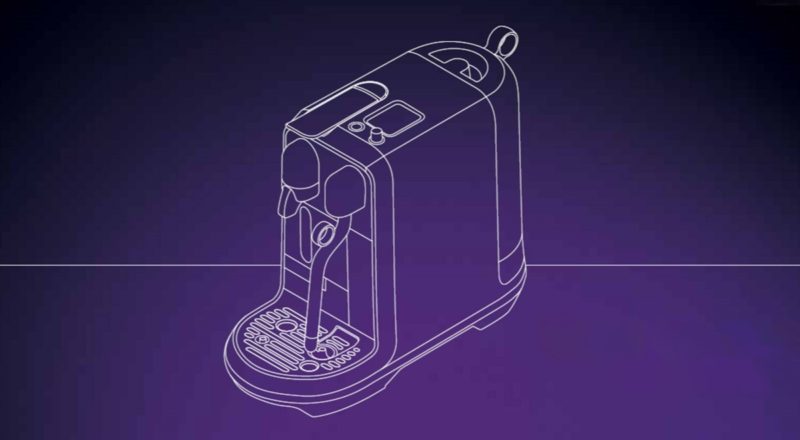My daily morning coffee is a cup of black V60 pour over and it’s usually enough for the day. But sometimes, during the late afternoon, I feel a bit sleepy and remember how nice a cup of flat white tastes. Especially one with a rich and creamy texture, topped with pretty free-pour latte art.
Back in the day, when my Citiz & Milk Nespresso machine was working, I made lattes regularly. But the milk frother that it came with wasn’t able to generate the microfoam needed for latte art, and there were no other machines made by Nespresso that could.
I briefly toyed with the idea of getting a home espresso machine, but concluded that I wouldn’t be making enough cups to justify the hassle of all the clean-up required. Plus also, espresso machines, and their accompanying paraphernalia, can get quite expensive, especially when you start approaching professional-level quality.
The Citiz & Milk broke down some years back and the machine was wiped down, packed into the box it came in and stashed in the storeroom. I started getting into pour over coffee, and started going deeper down that rabbit hole.
I recently found out that Nespresso had finally made a machine with a proper milk frother, and decided that it was a good time to dip my toes back into the world of milk-based espresso. At a retail price of S$748, the Nespresso Creatista Plus isn’t cheap and I was planning to wait until one of the major online sale periods to see how much of a discount I could get.

But I decided to try my luck and contacted Nespresso via their online chat to see if they would offer a discount if I traded in my old machine. Turns out they do have a trade-in program, and they offered 30% off a new machine for my Citiz & Milk. It was an attractive offer and that’s how a brand new Creatista Plus was delivered to our home a few days later.
In typical Nespresso fashion, a sampler pack of their pods was included with the machine. Interestingly enough, the purple Ristretto pods that I used to drink wasn’t included and I’d have to buy some from their store.

But ever since the patents on their pod design expired in 2012 and they lost several court cases to protect them, many coffee companies have started offering Nespresso-compatible pods and prices dropped by more than 30%.
For example, the 300 pound gorilla with the name that starts and ends with “S” is selling sleeves of 10 in supermarkets and online marketplaces for around S$7, or just 70 cents a pod. If you fancy more fancy beans, local roasters like Jewel Coffee and others are also offering their Nespresso-compatible pods at similar or higher prices.

The user manual that came in the box was quite thick because it included several languages. I managed to find a PDF version online, stripped out just the English portion and am saving it here for future reference.

The initial setup was pretty straightforward and I found the water hardness test quite interesting and not something I recall doing for my previous machine. Based on the testing strip and table provided, Singapore tap water is quite soft with Calcium Carbonate levels at the lower end of the 70 – 130 mg/l range.
Based on Nespresso’s recommendation, I won’t need to descale the machine until after I make 1,800 cups, which will take more than five years since this won’t be our daily coffee driver. I’m guessing that the machine would probably have broken down by then, but that’s something future me has to deal with.



Using the Starbucks House Blend pods, I made my first two cups of flat white using the default factory settings for coffee amount, milk temperature and froth level. The milk frother made the right hissing noises when steaming the milk, sounding similar to what you’d hear at a proper café.
Milk-wise, I decided to start with Meiji 4:3 Deluxe a.k.a. Meiji Red, mrbrown’s preferred choice after extensive testing. And since mrbrown is Singapore’s O.G. influencer (even before the term “influencer” even existed) and I am easily influenced, this was a no-brainer.


The steamed milk looked like it had the proper dense and silky texture, and after I swirled it around and tapped the milk jug on the counter to get rid of the bigger bubbles, I tried making my very first two cups of flat white with latte art.
Attempt #001 was supposed to be a heart and #002 a rosetta, supposed being the key word here. As you can tell, I clearly have a long way to go. I was going to use two digits in my numbering system, but decided to add another digit in case it takes more than 99 tries to produce something decent. There’s a good chance I might need the extra digit.


The milk didn’t seem quite hot enough and I’ll up the temperature setting for subsequent tries. Taste-wise, the coffee seemed a bit weak, maybe because the House Blend pods are meant for Lungos and not Espressos. Or maybe I need to use two pods, but that might be too much caffeine for a mid-afternoon drink.
So far, I’m pretty happy with the new machine and I’m looking forward to having the occasional flat white in the afternoon. Getting the latte art right, though, is going to take just a bit more time.
Note: This post contains affiliate links. If you use these links to buy something, I may earn a commission. Thanks.
